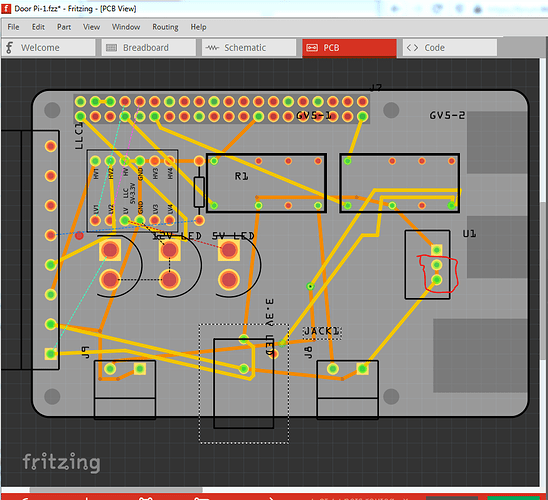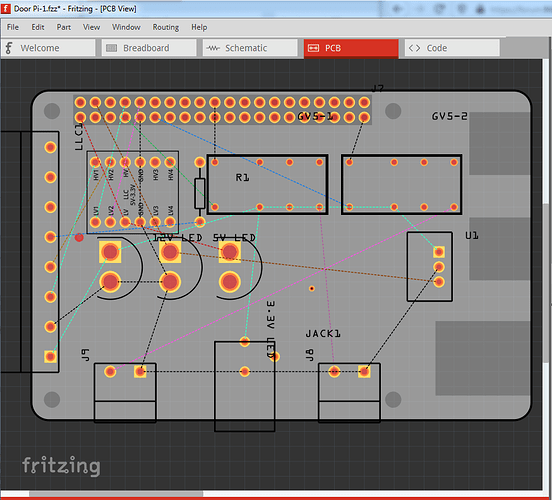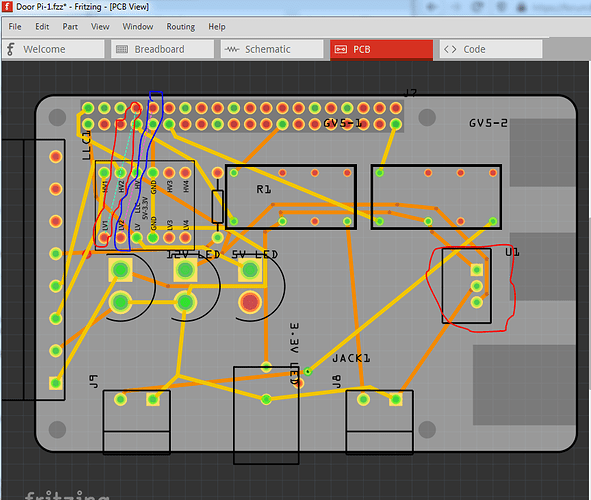I saw that. Another bug. The breadboard should be the lowest item and all parts above it, but in this case that isn’t happening. To fix it, right click on the breadboard and select Raise and lower->Send to Back which should put the breadboard on the bottom and make the connector reappear (it is just hidden, not missing as it appears.) Your power leds all need a series current limiting resistor , connected as they are the 12V and 5V ones will burn out and the 3.3V do nothing (because it doesn’t have a ground.) You are doing something odd in PCB because if in PCB I do a “Routing->Select all traces” and then hit delete (which deletes all the traces) then run autoroute I get a mostly correct layout (two wires can’t be routed due to clearances) that doesn’t match your original.
original:
red circle indicates a short between power and ground.
traces deleted leaving only the rats nest lines:
Autorouted:
note the difference in the traces on the dc dc converter. The two unroutable traces are outlined in red and blue at the top left. They can be manually routed by reducing the trace size and being creative, but that should wait til the design is complete. Note the 3.3V led has no connection to one of its pins so won’t do anything (and the labels should be dragged to be on the correct LED, the 12V is currently on the 5V led) and as noted the all three need current limiting resistors. Once we get a complete circuit I’ll clean up the autorouting to make the layout better. Except for very simple layouts autorouting is usually not useful ( a manual route is much much better.)
Edit: I just realized there are another two problems here: there are no supressor diodes on the relay coils and there are no relay drivers. The relay coil takes 100ma to operate according to the data sheet and a Raspberry PI output pin can only sink about 16Ma (much less than the 100ma the relay wants) and thus you will need a relay driver for the two coils. A simple transistor circuit with a snubber diode would probably be easiest, or a ULN2003 7 channel driver (of which you only need 2) as it already has the snubber diodes in it.
Edit: You probably want to pick up my just posted improved GPIO header part from here:
as it will make routing the pcb easier.
Peter


